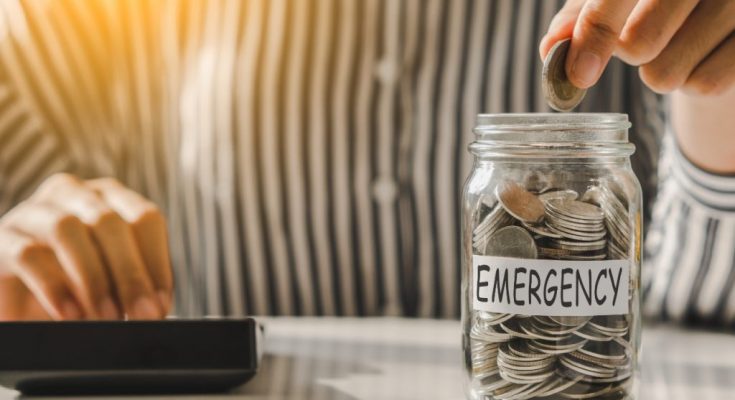An emergency fund is a savings account that can help you cover unexpected expenses and avoid debt. Learn how much you need to save and how to build your emergency fund.
Introduction
Life is full of surprises, and not all of them are pleasant. You never know when you might face a medical emergency, a car breakdown, a job loss, or any other situation that requires extra money. That’s why having an emergency fund is essential for your financial security and peace of mind.
An emergency fund is a savings account that you can access quickly and easily in case of an emergency. It can help you cover the costs of unexpected expenses without having to borrow money, use your credit cards, or dip into your retirement savings. Having an emergency fund can also reduce your stress and anxiety, as you know you have a safety net to fall back on.
But how much money do you need to save in your emergency fund? And how can you build it up without sacrificing your other financial goals? In this article, we will answer these questions and give you some tips on how to create and maintain your emergency fund.
How Much Money Do You Need in Your Emergency Fund?
There is no one-size-fits-all answer to this question, as it depends on your monthly expenses and personal situation. However, a general rule of thumb is to have between three and six months’ worth of household expenses in your emergency fund. This amount should cover your essential bills, such as rent or mortgage, utilities, food, insurance, and debt payments, as well as any other regular expenses that you can’t easily cut back on.
To calculate how much you need to save, you can use a simple formula:
Emergency fund = Monthly expenses x Number of months
For example, if your monthly expenses are $2,000 and you want to have a six-month emergency fund, you need to save:
Emergency fund = $2,000 x 6
Emergency fund = $12,000
Of course, this is just a guideline, and you may need to adjust it according to your specific circumstances. For instance, if you have a stable income, a low debt-to-income ratio, and a good credit score, you may be comfortable with a smaller emergency fund. On the other hand, if you have a variable income, a high debt-to-income ratio, or a poor credit score, you may want to have a larger emergency fund. You should also consider factors such as your family size, health condition, and risk tolerance.
Ultimately, the goal is to have enough money in your emergency fund to cover any unforeseen expenses that may arise, without compromising your long-term financial plans.
How to Build Your Emergency Fund?
Building an emergency fund may seem daunting, especially if you are starting from scratch or have a low income. However, it is not impossible, and you can achieve it by following these steps:
- Create a budget. The first step to building your emergency fund is to know where your money is going. You can use a spreadsheet, an app, or a pen and paper to track your income and expenses for a month. This will help you identify how much you can save and where you can cut costs.
- Set a realistic goal. Based on your budget and your desired emergency fund size, set a realistic and specific goal for your savings. For example, you can aim to save $1,000 in three months, or $5,000 in a year. Having a clear and attainable goal will motivate you and keep you focused.
- Open a separate savings account. To avoid the temptation of spending your emergency fund on non-emergencies, you should keep it in a separate savings account from your checking account. Ideally, you should choose a high-yield savings account that offers a competitive interest rate and no fees. You should also make sure that you can access your money quickly and easily when you need it, without any penalties or restrictions.
- Automate your savings. One of the best ways to build your emergency fund is to automate your savings. You can set up a direct deposit or a recurring transfer from your checking account to your savings account every month, or every time you get paid. This way, you can save money without even thinking about it, and you can avoid the risk of forgetting or skipping a payment.
- Find ways to earn extra income. Another way to boost your emergency fund is to find ways to earn extra income. You can look for a side hustle, such as freelancing, tutoring, babysitting, or selling your skills or products online. You can also sell your unwanted items, such as clothes, books, or electronics, on platforms like eBay or Craigslist. Any extra money that you make should go directly to your emergency fund.
- Celebrate your progress. Building an emergency fund can take time and effort, but it is worth it. To keep yourself motivated and on track, you should celebrate your progress and reward yourself for reaching your milestones. For example, you can treat yourself to a movie night, a dinner out, or a small purchase when you save your first $500, $1,000, or $5,000. However, make sure that your rewards are within your budget and don’t derail your savings plan.
Conclusion
Having an emergency fund is one of the most important steps you can take to secure your financial future and prepare for the unexpected. By following the tips in this article, you can build an emergency fund that suits your needs and goals, and that can help you cope with any emergency that may come your way. Remember, an emergency fund is not a luxury, but a necessity, and you should start building it today.




